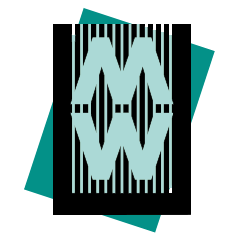Touch & Go: Creating an independent touch tour for low-vision users using 3D printing, tactile sensors, and sound.
Christine Murray, Antenna International, USA
In the summer of 2016, Antenna International embarked on an ambitious pilot project to address this question: how can museums leverage evolving technologies to enable blind and low-vision users to be completely independent explorers, in control of their own experience at a historical/architectural/cultural space? Many museums and cultural institutions offer accessible programming such as audio descriptions or guided touch tours, but often these programs rely (in some form) on an accompanying sighted person. With the advent of 3D printing, new scenarios and possibilities have opened up not just for the production of common and industrial objects, but for re-imagining the experiences we can create for individuals who engage with the world primarily in tactile and sound-based ways.
This pilot project, conducted in partnership with high-tech start-up Tooteko, experimented with combining a “smart ring,” 3D-printing, NFC tags, and associated audio content to create an independent, multi-sensory touch tour at the Museo dell’Ara Pacis, an ancient Roman temple in the center of the city. The Tooteko ring allows users to explore a 3D object with their hands, and when the user’s finger reaches a hotspot on the surface, the ring activates an audio message related to that specific hotspot. At the Ara Pacis, we created 3D tactile map for a general overview and navigation, “readable” labels and tactile images throughout the space, and guided touch explorations of actual artifacts, such as temple friezes and busts. The combination of these tactile experiences with intricately-timed audio messages allowed users to explore the space freely and independently, according to their own interests.
This lightning talk will cover the who, what, how, and why of the pilot, some of the challenges we faced, on-the-ground problem-solving, and lessons learned about the potential for this kind of independent mobile experience to work in other museum settings.
Bibliography:
"Stories of Inclusion: Inclusive Practices at Cultural Institutions," AAM2015
http://www.aam-us.org/resources/online-programs/past-program-archive/stories-of-inclusion-inclusive-practices-at-cultural-institutions
"Innovate or stagnate: Disrupting the conventional audio guide." MW2016: Museums and the Web 2016. Published April 2, 2016. Consulted September 29, 2016.
http://mw2016.museumsandtheweb.com/paper/innovate-or-stagnate-disrupting-the-conventional-audio-guide/
Park, Kyudong, Taedong Goh, and Hyo-Jeong So. "Toward accessible mobile application design: developing mobile application accessibility guidelines for people with visual impairment." HCIK '15: Proceedings of HCI Korea. Published 2014.
Wyman, Bruce, Corey Timpson, Scott Gillam and Sina Bahram. "Inclusive design: From approach to execution." MW2016: Museums and the Web 2016. Published February 24, 2016. Consulted September 27, 2016.
http://mw2016.museumsandtheweb.com/paper/inclusive-design-from-approach-to-execution/
